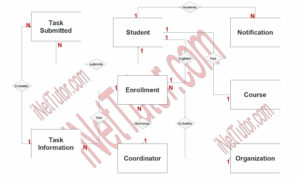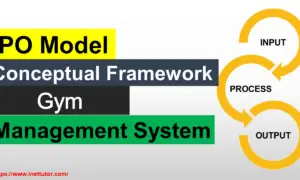IPO Model Conceptual Framework of Face Recognition Attendance System
This post will show you how to create a conceptual framework for the capstone project Face Recognition Attendance System. The input, process, output (IPO) model was used for the conceptual framework of this investigation.
About the Project
Table of Contents
The capstone project, entitled “Face Recognition Attendance System” is designed to automate checking and recording of students’ attendance during school events using face recognition technology. The system will work by storing the student’s information along with their photographs in a server and the system will detect the faces of the students during school events and match it and verify to record the presence or absence of the student. The face recognition attendance system has a camera that takes a picture of a person’s face. To get the features of the face, the image is then run through a computer to find them. These features are then used to find out who the person is and who they are. When the person shows up, the attendance system then records that. The system is comprised of three major components: a face detector, a feature extractor, and a classifier (or classification algorithm). The face detector recognizes and categorizes all of the faces in a photograph. Face features are extracted by the feature extractor from each individual face, including the position of the eyes, the size of the nose, and the shape of the lips. The classifier examines these characteristics and evaluates whether or not a face can be seen in the image being analyzed.
For more information about the project, please visit the link below:
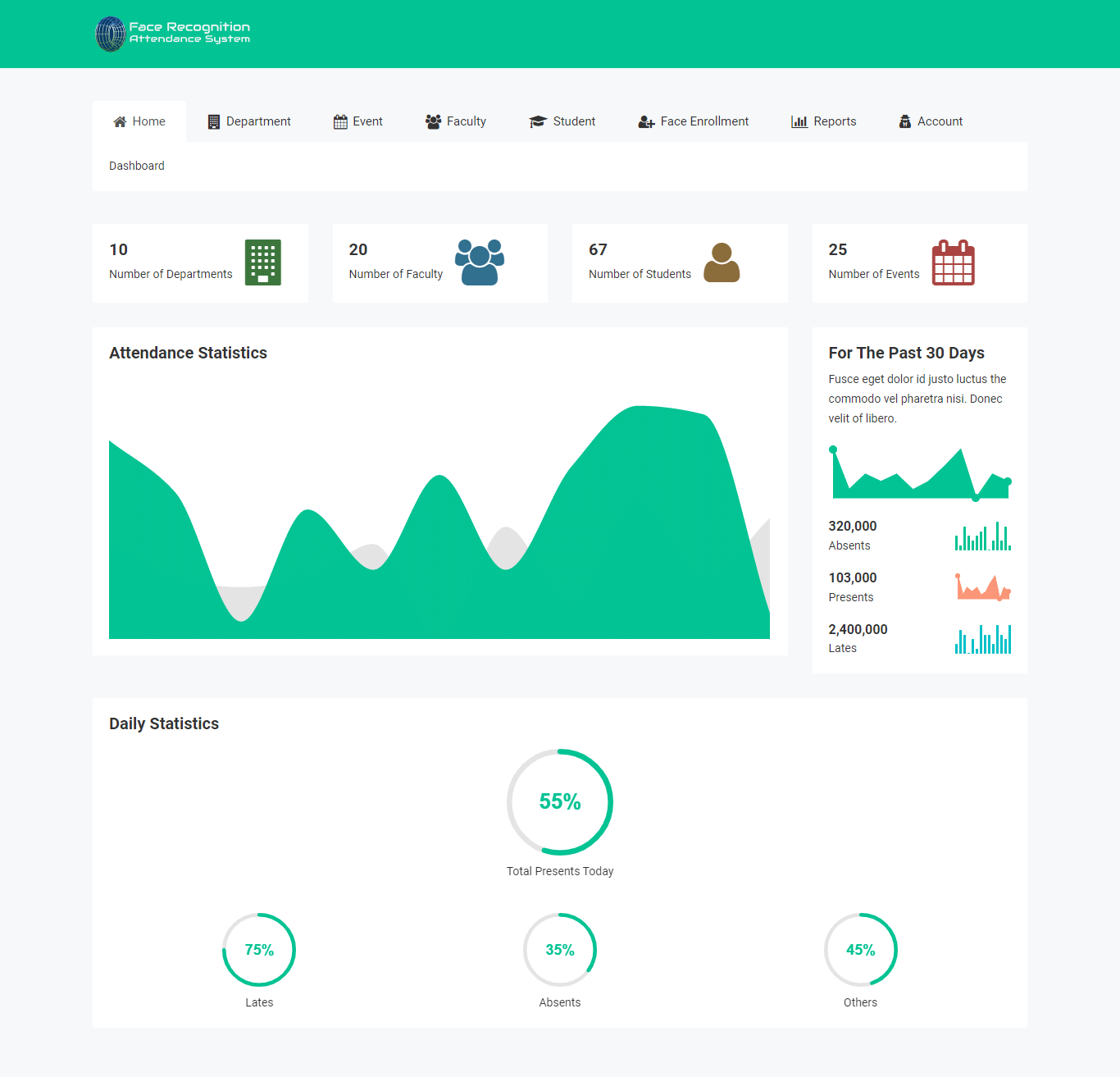
It is possible that the actual implementation of this system will differ based on the input photos (for example, it may utilize various feature detectors and different classifiers), but it is important to keep this basic model in mind while creating and studying face recognition systems.
Objectives of the Study
- To design a face recognition-based attendance system for school events.
- The system will serve as a platform wherein the students’ attendance during school events will be monitored.
- The system is simple to use and understand for the officer in charge.
- The system will reduce the number of errors in keeping track of students’ attendance.
- The system will simplify monitoring and reduce the amount of time spent on it.
The graphic above depicts the conceptual framework for the Face Recognition Attendance System project. It is based on the IPO model, which is sometimes referred to as the input, process, and output model.
IPO Model Conceptual Framework of Face Recognition Attendance System
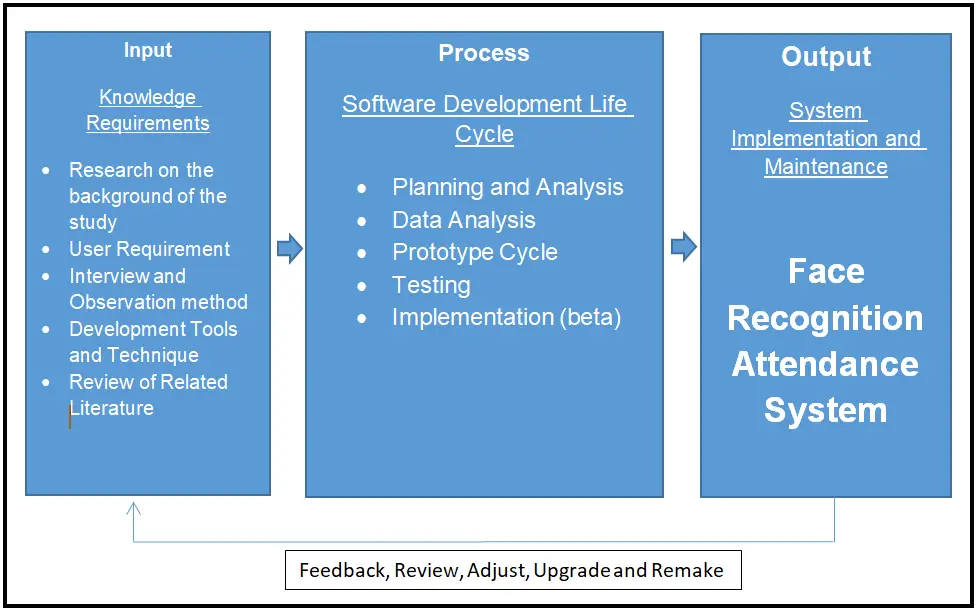
Input
The input phase, also known as the knowledge required stage, consists of the following steps:
Background study research – the researchers conducted a study on the breadth of the procurement system.
User Requirement – the researchers determined the system’s characteristics based on the needs of the users.
Method of Interview and Observation – The researchers performed an interview and observations in order to better understand the procurement system project.
Development Tools and Techniques – The researchers will need to choose a set of development tools that are appropriate for the project’s requirements.
Review of Related Literature – To serve as a guide in the creation of the procurement system, the researchers conducted research on various literatures and related systems.
Process
- Planning and Analysis
The planning stage of a face recognition system is the initial step in the process of developing the system itself. It is necessary to obtain information on the facial recognition system as a first step in this stage. Among the topics covered are the various types of face recognition systems, the various attributes that are utilized in the recognition process, and the various algorithms that are employed.
During the Planning and Analysis phase, the researchers conducted interviews with several offices involved in the procurement process. Following data collection, the researchers created an early design for the suggested system.

- Data Analysis
The researchers analyzed all of the data. This step also assisted the researchers in developing an idea for how to construct the suggested system and conceptualizing how it would be advantageous.
- Prototype Cycle
This stage includes design, development and testing from the information that has been gathered and analysed. The researchers started to develop the proposed system. It includes the design on how the system would look like based on the user requirements and research. In development stage, the researchers collected all the data that has been gathered to build the prototype. In testing phase the researchers tested the function of the system, the flow on how it works the feedback process of the proposed system had undergone testing by the three (3) Experts and its intended users. It informs the developers if they have any suggestion and flaws of the system functionality.
- Testing
This is the proposed system’s feedback process after it has been implemented and tested by the three Experts and its intended users. It notifies the developers if they have any suggestions or issues with the system’s functionality.
- Implementation
The process of bringing a face recognition system into use is referred to as the implementation stage of the process. The process may include the installation of software or hardware, the configuration of parameters, and the training of the system to recognize people’s faces. A face recognition system is often implemented by first establishing a database of faces that will be identified by the system when it is used. It is possible to enter the faces into the database manually, with the use of a digital camera, or by using existing images.
This phase discussed the implementation of the proposed system which was evaluated by the three (3) Experts. It also discussed if the recommended suggestions of the respondents and users had met.
Output
After the necessary steps were done, the project comes into life and implemented on the actual environment. A new project is born and will be maintained in order for the project to survive in the long run.
Using a face recognition attendance system, employees can be tracked as they enter and exit a designated area, making it possible to identify and track them more effectively. The system is comprised of a camera system that collects photos of people’s faces and a software program that compares these images to a database of previously captured images of people. A notification is sent to the individual’s designated supervisor or security staff when the individual’s face is detected in the database by the software application.
When it comes to managing safety and security at a facility, a face recognition attendance system is a critical tool. In this way, it can identify individuals who are attempting to enter restricted areas or who are otherwise violating company policy without authorization. The system also enables supervisors and security officers to keep track of the whereabouts of individual employees, which is quite useful. It is possible that this information will assist supervisors and security professionals in dealing with any concerns or issues that may develop with their employees.
The face recognition attendance system must be serviced on a regular basis in order to continue to function properly. The camera system must be kept clean and free of debris, and the software application must be updated on a regular basis in order for it to recognize new faces in the video feed.
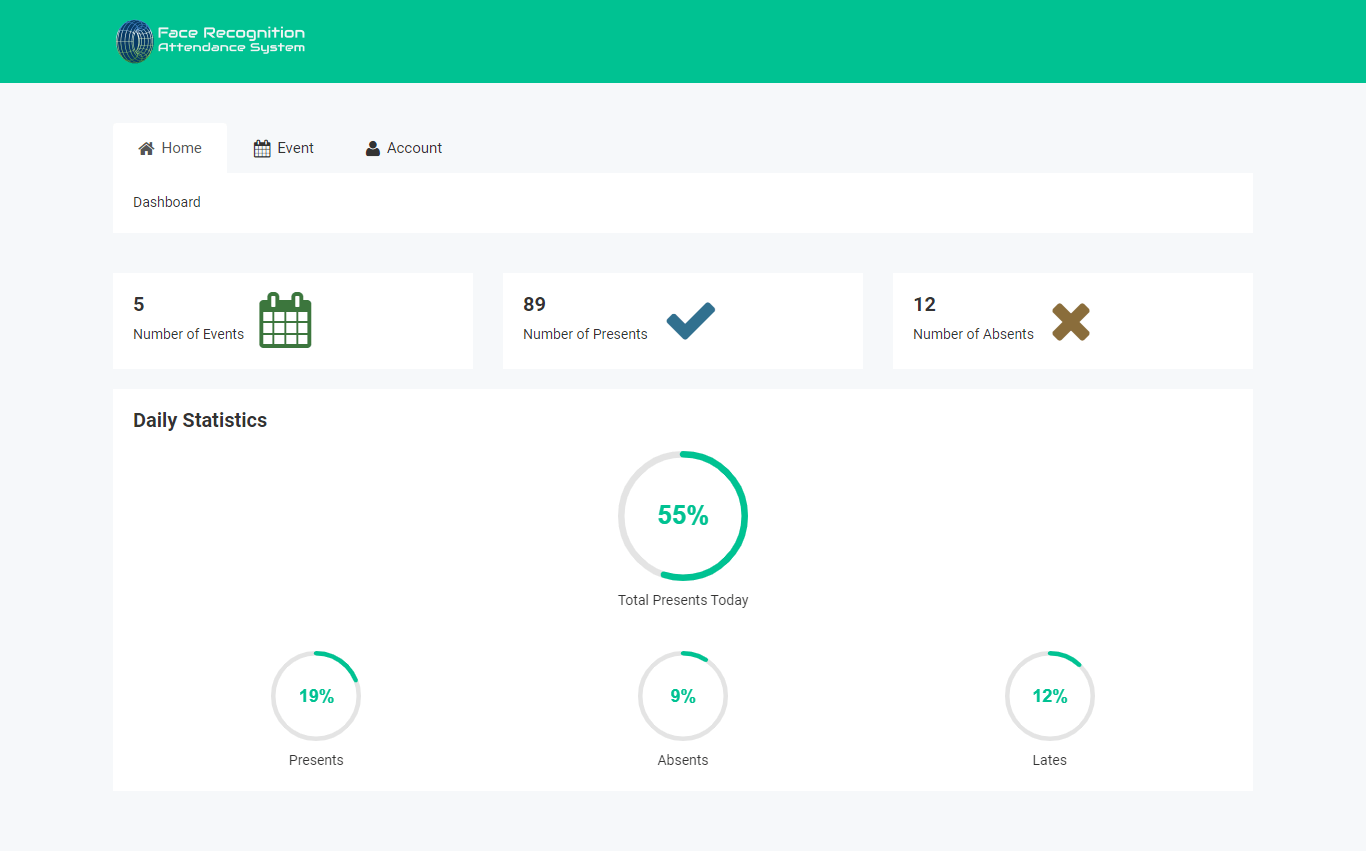
Summary
This article covered the processes required to develop the study’s conceptual framework. The researchers used the input, process, and output model, generally known as the IPO model. During the input stage, the researchers will go over many topics such as research on the study’s history, user requirements, interview and observation methods, development tools and techniques, and a review of related literature. In terms of the process stage, the researchers will adhere to the steps of the Software Development Life Cycle (SDLC) approaches. Following the completion of the system development process, a new project will be implemented, used, and maintained. The researchers plan to keep the Face Recognition Attendance System running for a long time.
You may visit our Facebook page for more information, inquiries, and comments. Please subscribe also to our YouTube Channel to receive free capstone projects resources and computer programming tutorials.
Hire our team to do the project.
Related Topics and Articles:
Face Recognition Attendance with SMS notification Capstone Project
Conceptual Framework of Face Recognition Attendance
Car Registration License Plate Detection and Recognition System
IPO Model Conceptual Framework of Online Real Estate System
Web-Based Attendance System Free Download Bootstrap Template
